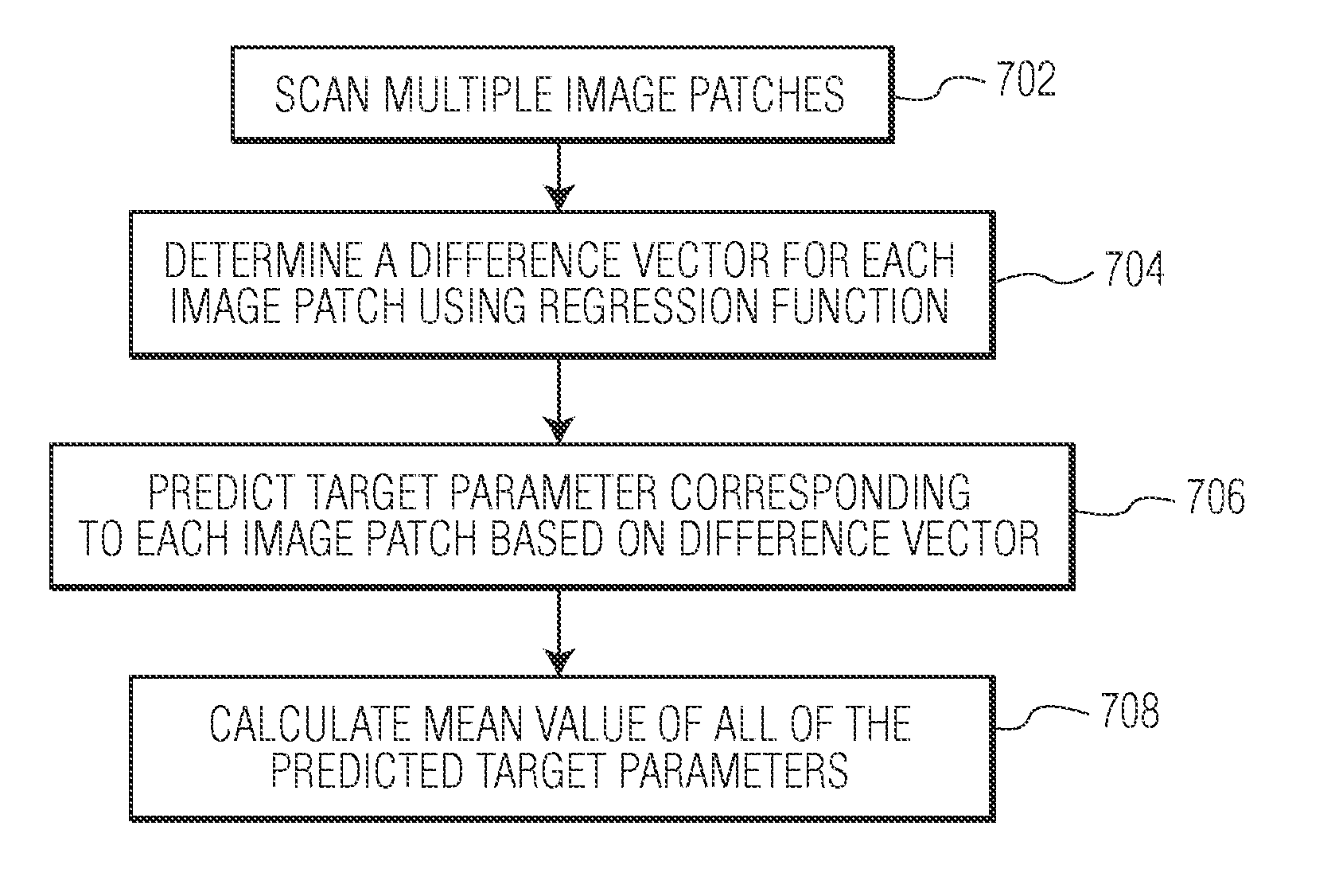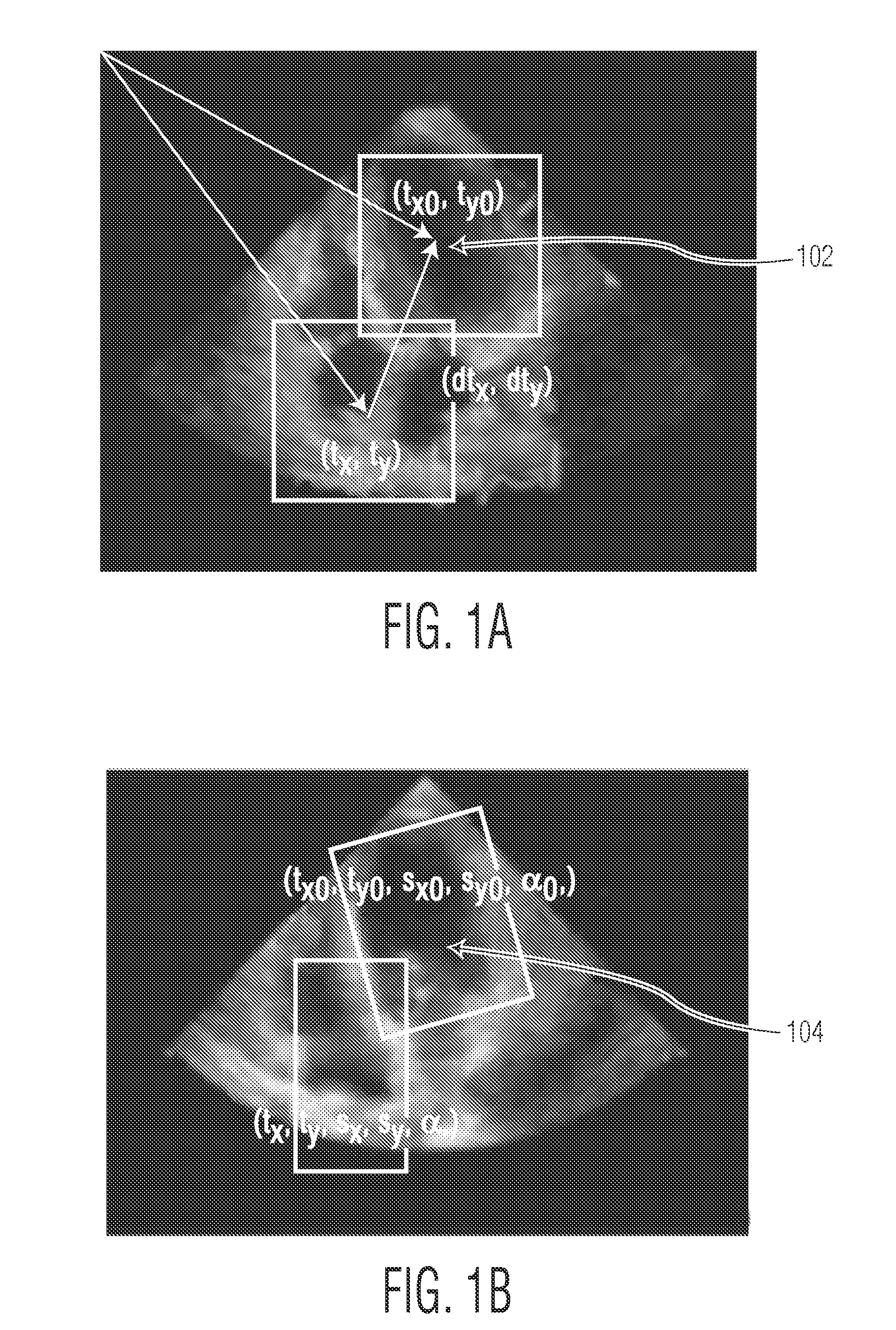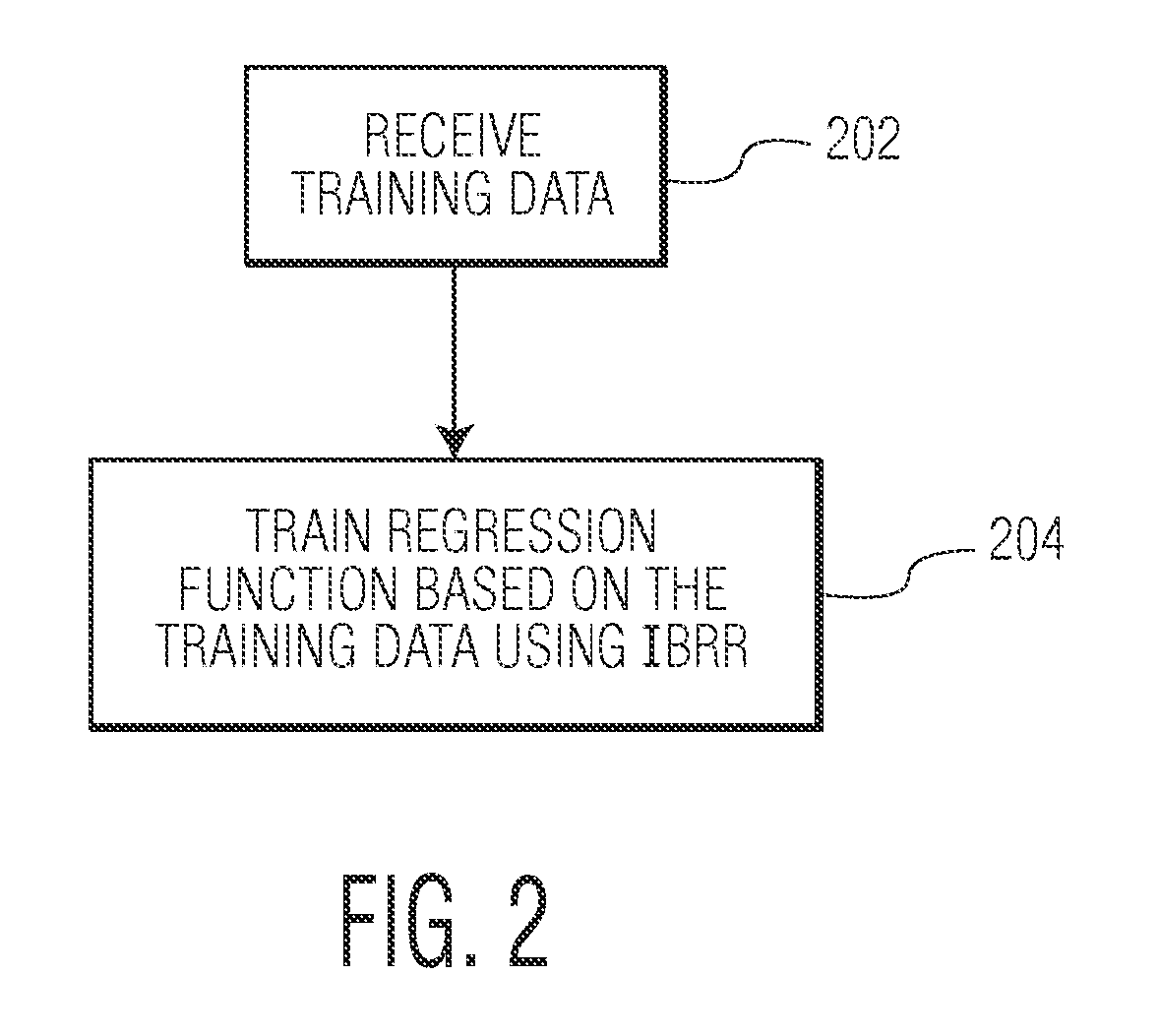Method and System For Regression-Based Object Detection in Medical Images
a regression-based object and image technology, applied in the field of object detection in medical images, can solve the problems of linear linear complexity of the classifier-based approach, extra computation of rotating images and computing their associated integral images, and difficulty in building a rapid detector for medical anatomy using the classifier-based approach
- Summary
- Abstract
- Description
- Claims
- Application Information
AI Technical Summary
Benefits of technology
Problems solved by technology
Method used
Image
Examples
Embodiment Construction
[0023] The present invention is directed to a regression method for detecting anatomic structures in medical images. Embodiments of the present invention are described herein to give a visual understanding of the anatomic structure detection method. A digital image is often composed of digital representations of one or more objects (or shapes). The digital representation of an object is often described herein in terms of identifying and manipulating the objects. Such manipulations are virtual manipulations accomplished in the memory or other circuitry / hardware of a computer system. Accordingly, is to be understood that embodiments of the present invention may be performed within a computer system using data stored within the computer system.
[0024] An embodiment of the present invention in which a regression function is trained and used to detect a left ventricle in an echocardiogram is described herein. It is to be understood that the present invention is not limited to this embodi...
PUM
 Login to View More
Login to View More Abstract
Description
Claims
Application Information
 Login to View More
Login to View More - R&D
- Intellectual Property
- Life Sciences
- Materials
- Tech Scout
- Unparalleled Data Quality
- Higher Quality Content
- 60% Fewer Hallucinations
Browse by: Latest US Patents, China's latest patents, Technical Efficacy Thesaurus, Application Domain, Technology Topic, Popular Technical Reports.
© 2025 PatSnap. All rights reserved.Legal|Privacy policy|Modern Slavery Act Transparency Statement|Sitemap|About US| Contact US: help@patsnap.com



